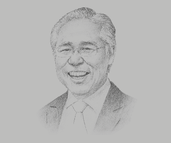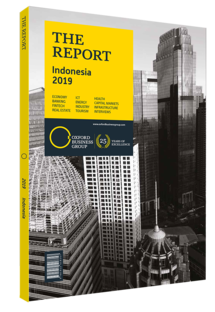Enggartiasto Lukita, Minister of Trade: Interview

Interview: Enggartiasto Lukita
How will the Regional Comprehensive Economic Partnership (RCEP) benefit Indonesia?
ENGGARTIASTO LUKITA: The RCEP consolidates all existing ASEAN+1 free trade agreements (FTAs) with China, South Korea, Japan, Australia, New Zealand and India in order to avoid complications arising from multiple existing FTAs. The deal would provide open market access to 15 countries. As such, the RCEP could potentially improve Indonesia’s GDP by 0.06% over the next 10 years, strengthening economic linkages, and enhancing trade and investment. Industries that stand to particularly benefit are agriculture, mining, wood products, paper, rubber and plastics.
Currently, the RCEP is the biggest deal of its kind under negotiation, and several members of the RCEP are also members of the Trans-Pacific Partnership (TPP). Indeed, the combined GDP of the RCEP economies surpasses that of the TPP. In view of the growth of China, India and Indonesia, it is estimated that the total GDP of RCEP economies will exceed $100trn by 2050.
In what ways will the Comprehensive Economic Partnership Agreement (CEPA) with the EU contribute to the development of trade?
LUKITA: We aim to conclude CEPA negotiations with the EU as soon as possible. Timing is really important to maintain competitiveness and to avoid losing market share in the EU to our competitors. We expect to increase bilateral trade through the CEPA, and this will attract investment in many areas.
What challenges does the country face when it comes to the question of exports?
LUKITA: Under its current administration, the US has stipulated a number of policies that put its trading partners, including Indonesia, in a difficult situation. At present, one of the major issues is the country practice review of the generalised system of preferences (GSP). Under this review, the US government is reconsidering the GSP status of Indonesia, along with India, Kazakhstan and Thailand. This could significantly affect exports to the US, as almost 10% of all Indonesian exports to the US were covered by the GSP in 2017. The US remains one of Indonesia’s most important trade partners and free trade is beneficial for our two countries despite the rise in global protectionism.
Given these challenges, Indonesia is not only maintaining its traditional trading markets, but also broadening its relations with other potential markets. Nevertheless, it is still pivotal for the country to improve the competitiveness of its exports and enhance participation in global value chains.
How do trade agreements with non-traditional markets reflect a shift in trade strategy?
LUKITA: With Indonesian exports starting to be more competitive on the global stage, non-traditional markets are becoming increasingly attractive, as they have tremendous trade potential which has not yet been optimally explored, as a result of currently existing trade barriers. A major priority is to strengthen trade relations with Latin America. A step towards this was achieved with the signing of the Indonesia-Chile CEPA in 2017. With regard to Africa, we are currently pursuing trade negotiations with Mozambique, Tunisia and Morocco.
In addition to this, we are looking into the possibility of negotiating trade deals with the Economic Community of West African States, the East African Community and the Southern Africa Customs Union (SACU). We hope that these new trade agreements will be able to facilitate trade and promote exports, especially by lowering or eliminating import duties. By pursuing such agreements with new partners, Indonesia is seeking to expand its market access and diversify the destination of its many exports.
You have reached the limit of premium articles you can view for free.
Choose from the options below to purchase print or digital editions of our Reports. You can also purchase a website subscription giving you unlimited access to all of our Reports online for 12 months.
If you have already purchased this Report or have a website subscription, please login to continue.

